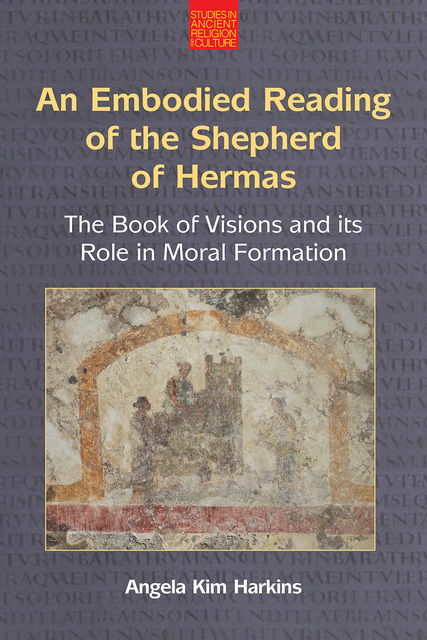Harkins/Embodied Reading, 5. Immersion in the Narrative World of Apocalyptic Visions

Full description
While overwhelming evidence points to the widespread popularity of the Shepherd and its role in moral formation, the majority of modern scholarship on the Shepherd has been driven by disciplinary questions that seek exegetical, theological, and historical information. Since the focus of our study is the first book of the Shepherd of Hermas known as the Book of Visions, Chapter Five begins with an examination of how the Shepherd has been understood within the broad scholarship of ancient apocalypses. This chapter follows on the heels of the previous discussion, which established the Shepherd’s success as a popular work among the elite literary readers of the third-and fourth-centuries. In contrast to the Shepherd’s generally positive reception in the ancient world, modern scholars have received the work with ambivalence. This chapter examines how the literary form of visions, or what modern scholars call the apocalypse genre, contributed to the Shepherd’s popularity among ancient readers. Interdisciplinary approaches associated with cognitive literary theory are used to complicate the historical-critical understanding of ‘apocalypse’ as it has been applied to the Shepherd of Hermas by analyzing (1) the scholarly distinction between “thisworldly” and “otherworldly” spaces, and (2) the kinds of bodily experiences had by the seer, Hermas, which are presented in this chapter as proprioceptive and interoceptive experiences. This chapter begins with the modern form-critical understandings of apocalypses and raises questions about the strong conceptual divide that is often set up between “thisworldly” and “otherworldly” experiences. Instead of the stark divide between the spaces and experiences of “thisworld” and the “otherworld,” a distinction that perpetuates an analytical bifurcation of reality, our discussion presumes that the worldview of the author of the Shepherd is porous and “spirit-infused.” Ancient apocalypses present “thisworldly” and “otherworldly” experiences as intertwined and overlapping, not as two totally distinct realms set apart from one another. The second part of this chapter argues that the description of the seer’s proprioception and interoception found in the Book of Visions is similar to other apocalypses in its concern to provide a detailed description of the bodily experiences of the seer. We argue that apocalypses provide readers with access to the kinds of embodied experiences that allow them to infer the presence of an interior consciousness and to gather information about the possible world of the seer. Apocalypses achieve this vivid immersive quality through descriptions of the seer’s proprioceptive and interoceptive experiences.
- typeImage
- created on
- file formatjpg
- file size460 KB
- container titleAn Embodied Reading of the Shepherd of Hermas: The Book of Visions and its Role in Moral Formation
- creatorAngela Kim Harkins
- isbn9781800503298 (eBook)
- publisherEquinox Publishing Ltd.
- publisher placeSheffield, United Kingdom
- rightsEquinox Publishing Ltd.
- series titleStudies in Ancient Religion and Culture
- doi
We use cookies to analyze our traffic. Please decide if you are willing to accept cookies from our website. You can change this setting anytime in Privacy Settings.
